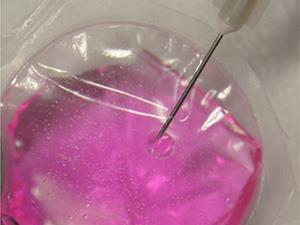A test can detect unwelcome extra ingredients in coffee by analysing the drink’s sugar fingerprint

A test to detect counterfeit coffee – ground beans that have been bulked up with cheap, low quality filler ingredients – has been developed by scientists in Brazil.
There are currently very few ways to tell if the coffee we buy and drink contains things it shouldn’t. As one of the world’s most popular drinks there is a huge global demand for coffee, and when supplies are low the price rises, which encourages fraud. Increasingly, ground coffee is being mixed with cheaper ingredients such as maize, soybeans, sugar and acai seeds, and while these unwanted extras aren’t harmful, they can spoil the quality and taste of the final product.
Detecting fillers is tricky, because although the raw ingredients look very different, once they have been mixed in with the coffee, ground and roasted they are impossible to spot. ‘We can’t see this kind of adulteration with the naked eye,’ says Suzana Nixdorf from the State University of Londrina, speaking at the 248th ACS National Meeting & Exposition in San Francisco, US. Existing checks, she says, rely on microscopy, which can be subjective.
Nixdorf and her colleagues have developed a more accurate, quantitative way to measure coffee purity, using high-performance liquid chromatography (HPLC) to measure the levels of different carbohydrates in a sample.
This works because different plants have very different carbohydrate profiles, and the most abundant sugars can be used as markers to detect their presence in a sample. When they measured and compared different samples, the team identified galactose as the dominant sugar in Arabica coffee. In the wheat–rye hybrid triticale, a common filler, this was glucose, and in acai it was mannose. They mixed these ingredients to create samples that were identical to look at, but the analysis could easily distinguish between them, as well as quantify the amount of each ingredient in the mixture. ‘We can now detect tampering with 95% accuracy,’ says Nixdorf. She adds that the same technique can be used to tell if a sample is contaminated with other parts of the coffee plant such as ground up stems, because although they contain the same carbohydrates, the proportions of each are different.
‘The study certainly highlights a growing problem, and begins to address it,’ says Alan Crozier from the University of Glasgow, UK, who has studied coffee’s chemistry. ‘It would be interesting to know what big producers of instant coffees do to check the quality of the beans they buy and how they check for adulteration.’












No comments yet